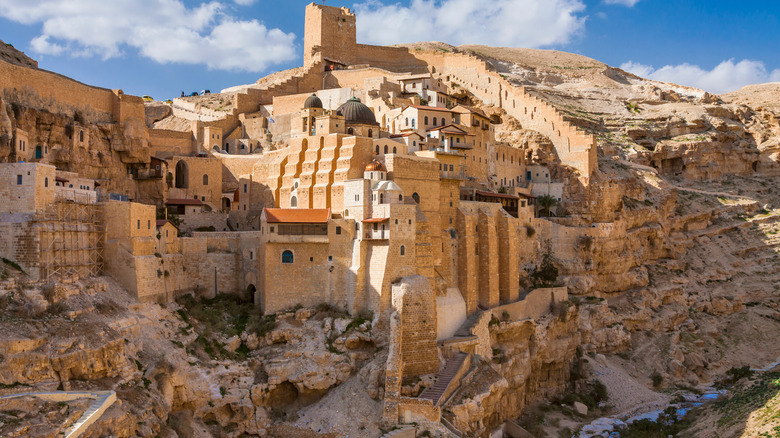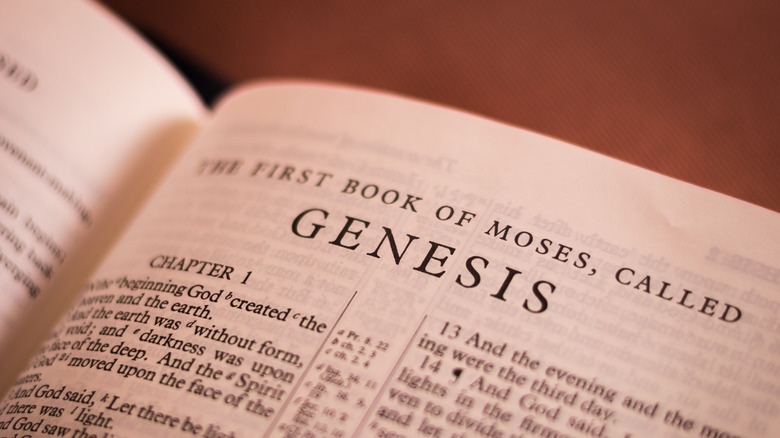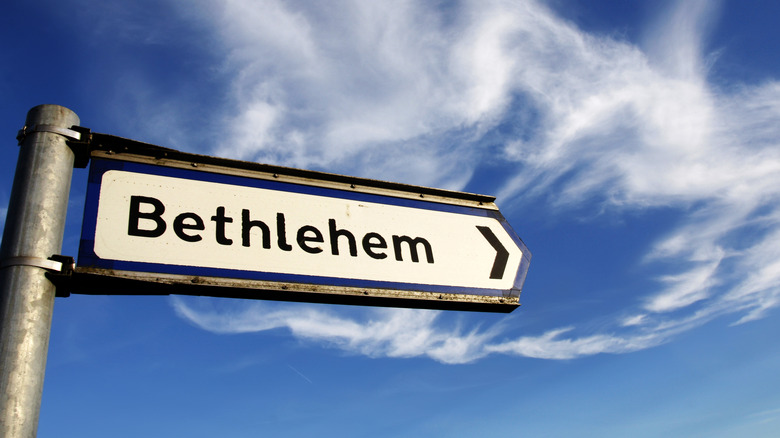What Bethlehem Really Looked Like In The Bible
The modern city of Bethlehem is located on the West Bank — a historically disputed territory at the center of the Israel-Palestine conflict. Despite being at war for many years, the region has a rich history that can be traced to the Bible, in which Bethlehem is regarded as a holy city and the birthplace of Jesus, per Learn Religions. Because of these claims, the area is the site of annual pilgrimages from millions of Christians around the world, and today it is a Palestinian city with over 20,000 residents, Vox reports. Like every present-day city, Bethlehem offers fast-food restaurants, museums, and historical places like the Mar Saba Monastery (pictured above), which is an ancient structure built in A.D. 5.
There are countless references to Bethlehem in the Bible. And while what it looks like today might be unrecognizable from how it was described in the religious text, you don't need to use your imagination — there are several parts of the Bible that detail what the city might have looked like centuries ago.
Biblical Bethlehem
In ancient times, Bethlehem was known as Ephratah, as well as Bet Lehem, Bethlehem Ephrathah, and Bethlehem-Judah, via Britannica. In one of the very first mentions of it in the Bible — Genesis 35, verse 19 — it is named as the burial ground of a woman named Rachel, which remains there today, RTE reports. It is also mentioned as the birthplace of David, who eventually became the king of Israel.
Bethlehem is south of the city of Jerusalem and is described as a hilly and mountainous area that sits high above sea level, per Learn Religions. There was also a gate to the city, which played a key role in an event that is referenced in 2 Samuel 23, verse 16, when Bethlehem sees military occupation: "The three mighty warriors broke through the Philistine lines, drew water from the well near the gate of Bethlehem and carried it back to David."
This particular well is mentioned again in 1 Chronicles 11, verse 17: "David longed, and said, 'Oh that one would give me water to drink from the well of Bethlehem, which is by the gate!'" The continued reference of the well suggests that Bethlehem was not an area with an easily accessible water supply.
Typical buildings in ancient Bethlehem
The city of Bethlehem was also built up by Rehoboam — the king of Judah (modern-day Israel). In 2 Chronicles 11, verses 5-12, the Bible says that he fortified Bethlehem and other surrounding areas, and is responsible for the fruitful land that surrounds the city. He also built fortresses and had them guarded — some of which are still standing today (via Bible Places).
Another common belief is that because many housing structures were situated in front of caves, Jesus was likely born in one. Indeed, this appears to be supported by Luke 2, verse 7. After giving birth, it says Mary has to wrap baby Jesus due to a lack of room where they were located: "And she gave birth to her firstborn, a son. She wrapped him in cloths and placed him in a manger, because there was no guest room available for them."
Based on what we already know about the early architecture in the years before and after Jesus was born, we know that palaces, religious temples, fortresses, and bathhouses were common structures in Bethlehem. Modern infrastructure — like paved roads — didn't exist, and most houses were built with stone and constructed with the idea that they would be places for sleeping, cooking, and keeping warm (via Jesus Story).


